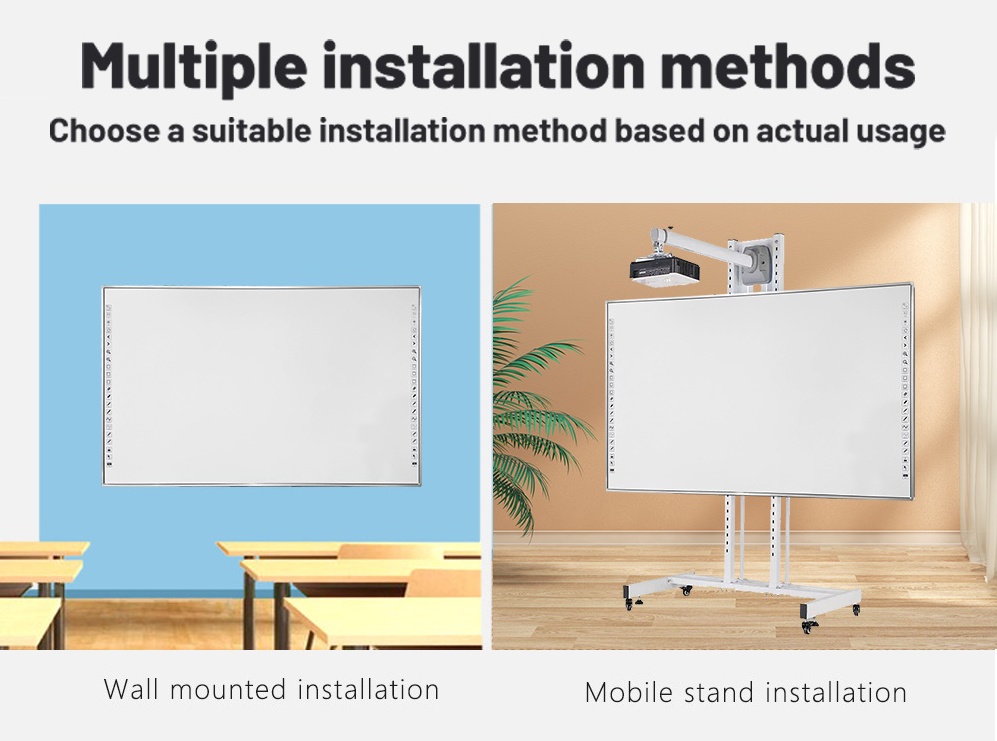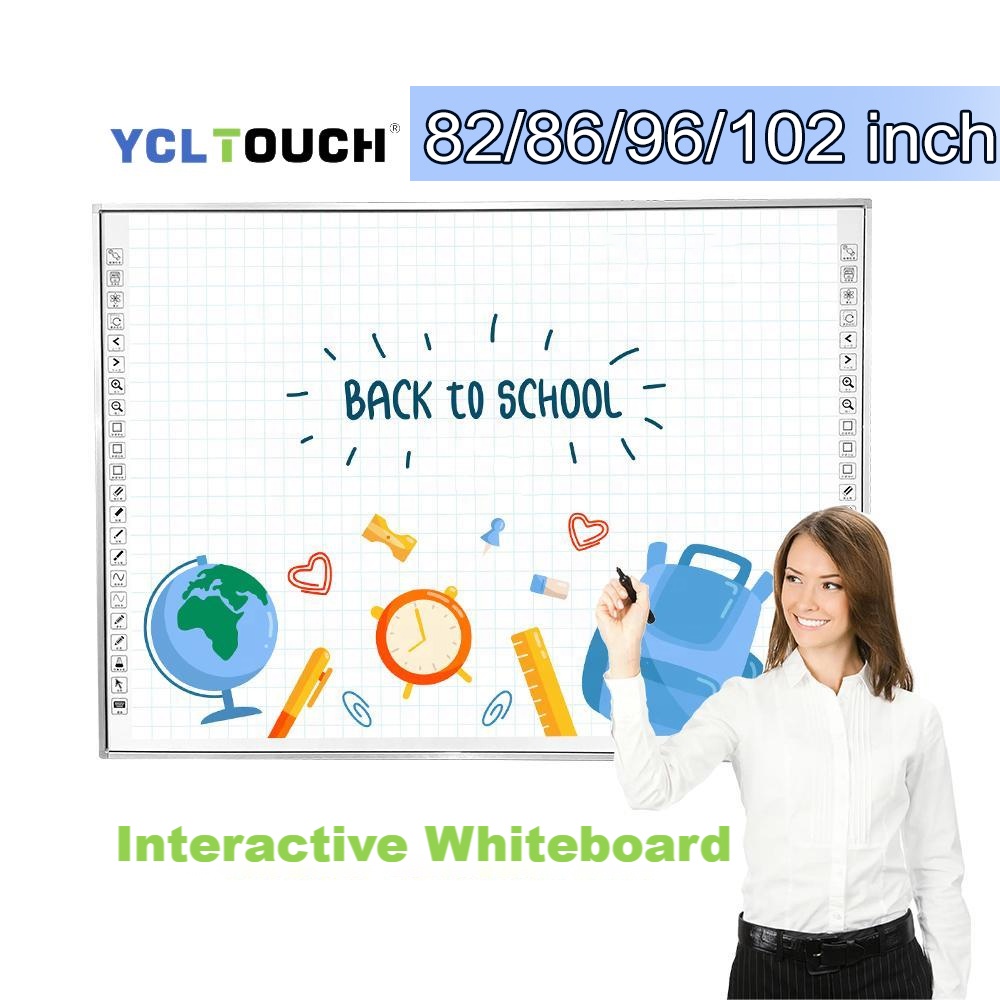What is the interactive whiteboard?
2024-12-27
Definition
- Digital whiteboard is a high-tech teaching and conference equipment that integrates computer technology, electronic sensing technology and projection display technology. It usually consists of whiteboard hardware and supporting software. From the appearance, it is similar to a traditional whiteboard, usually a large flat board, installed on the wall or bracket in classrooms, conference rooms and other places.
Hardware composition
- Induction panel:This is one of the core components of the interactive electronic whiteboard. It is able to perceive touch, writing, and other operations in the outside world. Induction technology mainly includes electromagnetic induction, infrared induction, optical image induction, etc. For example, the electromagnetic induction whiteboard determines the position through the electromagnetic signal emitted by the electromagnetic pen, and when the electromagnetic pen is close to the whiteboard, the electromagnetic induction coil inside the whiteboard will detect the signal, so as to accurately locate the position of the pen tip, and realize high-precision writing and drawing functions. The infrared induction whiteboard uses the infrared emission and receiving tubes around the whiteboard, and when there is an object blocking the infrared light, the coordinates of the touch point are determined by calculating the interrupt position of the light.
- Projection Equipment Interface:It is used to connect external projection devices, such as projectors. The projector projects the computer's image or video content onto the surface of the whiteboard so that the user can see a variety of content. It has a variety of interface types, including common VGA interfaces, HDMI interfaces, etc., to adapt to different projection devices.
- Other interfaces:There will also be USB ports, network ports, etc. The USB interface can be used to connect peripherals such as external storage devices, electronic teaching whips, etc. The network interface enables the whiteboard to be connected to the network, which is convenient for software updates, online resource access and other functions.

Software Features
- Writing & Drawing Functions:Users can use an electronic pen or their finger (if the whiteboard supports touch) to write on the surface of the whiteboard, just like writing on a traditional blackboard. The software offers a variety of writing instruments, such as pencils, pens, highlighters, and other different stroke effects, as well as different colors and line thicknesses. At the same time, it can also draw various geometric figures, such as circles, squares, triangles, etc., and the drawn figures can be easily edited, such as moving, scaling, rotating and other operations.
- Multimedia display function:Ability to display multimedia files in a variety of formats. For example, you can play video and audio files directly on the whiteboard, and you can also display documents such as PPT and PDF. When displaying PPT, users can not only turn the page normally, but also annotate the content in the PPT, such as annotating key text and pictures to enhance the effect of explanation.
- Teaching resource integration function:Many smart board for teaching for classroom software comes with a rich library of teaching resources, covering materials from various disciplines, such as mathematical formulas, physics experiment models, Chinese texts reading aloud audio, etc. Teachers can easily call relevant materials from the resource library according to the teaching content and progress, and integrate them into their own teaching process, so as to enhance the richness and interest of teaching.
- Interactive features:Support multiple people to operate at the same time. In a classroom or meeting setting, multiple participants can interact on the whiteboard, such as working together on a mind map, doing a group drawing competition, etc. At the same time, remote interaction can also be realized, and through a network connection, people in different locations can operate on the same whiteboard software interface, as if they were in the same room, which is very useful for remote teaching and remote meetings.

Application scenarios
- Education:It is widely used in school classrooms. Teachers can use the interactive electronic whiteboard to carry out vivid course teaching, whether it is basic subjects such as Chinese and mathematics, or physics, chemistry and other experimental subjects, they can display experimental videos, simulate the experimental process, and explain complex formulas through the whiteboard. It has changed the traditional teaching mode, from the teacher's unilateral teaching to the interactive communication between teachers and students, and students can directly participate in activities such as answering questions and displaying homework on the whiteboard, which improves the enthusiasm and initiative of learning.
- Corporate Meeting Areas:In corporate meeting rooms, smart board for teachings are an important tool for effective meetings. It can be used to display the company's business data, market research reports, project plans, etc. Participants can discuss and modify plans on the whiteboard in real time, quickly integrate everyone's ideas, and improve the efficiency of the meeting and the speed of decision-making.

 Mr. zptouch01
Mr. zptouch01




